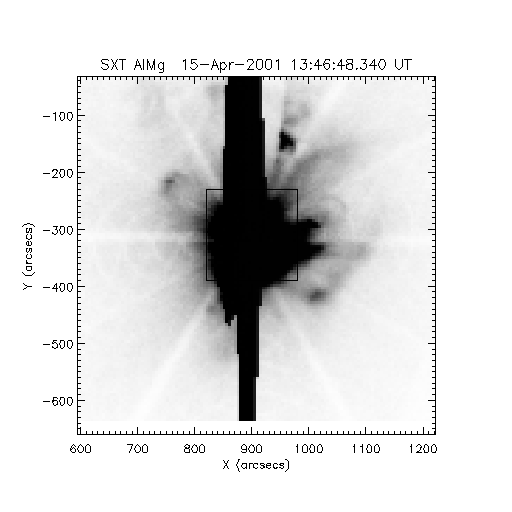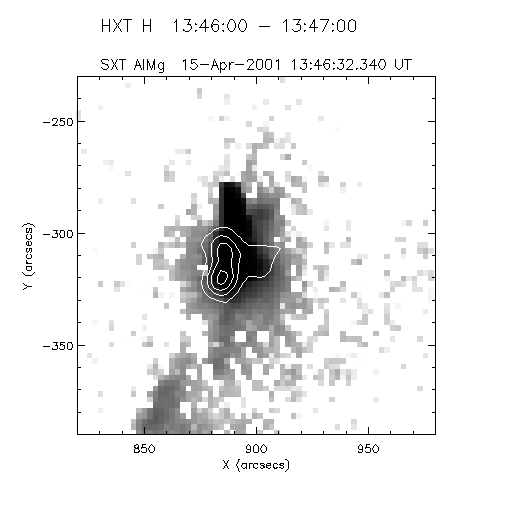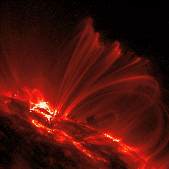
|

|
An invisible hand: the X15 flare of April 15, 2001
For background please read this earlier nugget, which deals with "coronal imperturbability". In other words, the large-scale structure of the corona appeared, in that case, not to be permanently deranged by a nearby major flare/CME. This flies in the face of one's intuition, which views the corona as a delicate balancing act among the bulk forces: gas pressure, magnetic pressure, magnetic tension, and gravity. Thus if a disruption happens, one would expect restructurings. The flare reported here showed us a clear example of a restructuring, carried out by the "invisible hand" of the magnetic forces so far as we could tell.
At the X15 GOES level, the solar X-ray luminosity becomes about one part per million of the solar constant (temporarily); such a major event only happens once, or a few times at most, during a single 11-year solar cycle. Here are two pictures of our event:

|

|
The left picture is dominated by detector artifacts (the saturation "bleed" columns running vertically), but in the background one can see faint coronal features (solar vertical is to the right) and even more faintly, the limb of the Sun in the top middle of the image. It is a reversed color table, so that the saturated regions are black. The coordinates shown are positive west and north of Sun center. The picture on the right shows a less-saturated image with hard X-ray contours (53-93 keV, very energetic) superposed. Although no detailed study of this flare has appeared in the literature yet, and we don't know if it is a real feature, the contours show a clear extension towards the corona, suggesting much higher densities there than normally expected. This might be consistent with the occurrence of this powerful flare.
In the image below we show a coronal arcade, as observed by TRACE but in a different event. Although this is not the same flare, it shows the clear signature of a loop arcade extending into the corona - a set of loops in an almost cylindrical geometry. When seen in soft X-rays, such an arcade usually means that a flare has happened some time previously.

We have craftily put a movie under this image, and it shows the main result of this nugget but needs explanation. In the movie one can (faintly) see an arcade similar to the TRACE one, which appears to be blown out of sight by the occurrence of the flare. Thus this flare does not show coronal imperturbability at all, but rather something quite reasonable: a flare is a huge magnetic explosion, even though we do not understand how it works, and such an explosion can carry with it adjacent solar structures. Sometimes!
This eruptive flare was one of many in the same solar active region, and not the last even though it was near the west limb on April 15. On April 18 an even greater flare probably happened, and Yohkoh only observed its higher coronal parts because of occultation by the solar limb. This was described in the science nugget for April 20, 2001; see also here for an earlier event in the same region. We really hope that we find the time to analyze these events, and/or hope that somebody else will study them for us.
Oh yes. The "invisible hand" of the title refers to the magnetic field, which is quite invisible to us, not to a primary force of economic theory.
May 17, 2002
Hugh Hudson and Nariaki Nitta (hudson@isass1.solar.isas.ac.jp)